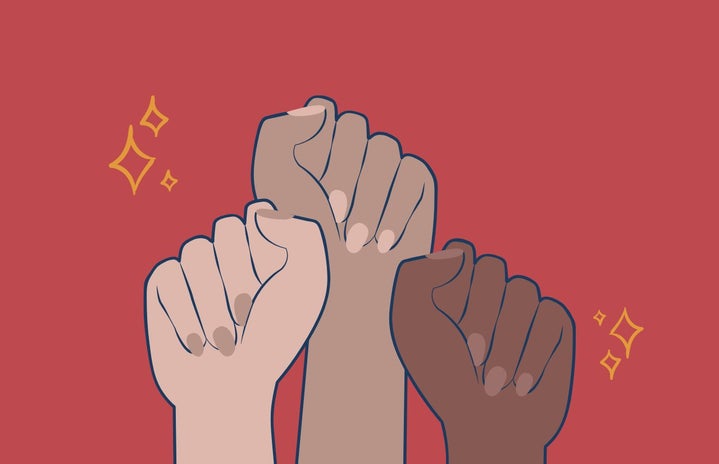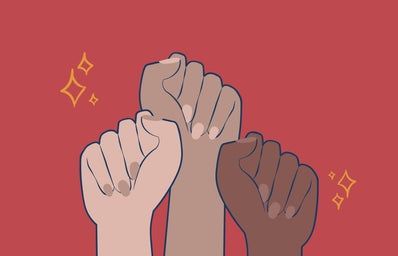As far as powerful women go, Marie Laveau ranks high on the list. As a woman looking for inspiration in other strong women (okay, don’t follow her life too closely please), you should know about her too. Laveau was a voodoo priestess from the 19th century who thrived in New Orleans. As a history major, the most interesting thing about her for me, is how the myth of Marie Laveau came to be. How did it form? How did she cultivate it? How realistic is it? There are several contrasting and fractured accounts of this incredible woman that make it difficult to discern who she was and what exactly she accomplished. Let’s look at how she was and is now perceived by the public and analyze the ways the “high priestess of New Orleans” cultivated her reputation.
What we know about Marie Laveau is quite mythified and ambiguous. Researchers know she was born at the turn of the 18th century. However, they disagree as to whether she was born in 1794 or 1801 (Long 270). We know that Laveau was baptized by the Roman Catholic Church only six days after her birth and remained a devout catholic her entire life (Fandrich 153). This was an issue for some Louisianians who believed her mixing of the Catholic faith and voodoo was sacrilegious (Fandrich 177). She married twice; the first time, at 25, she wed a free Haitian refugee named Jacques Paris. This marriage was an unhappy one and he disappeared from records after a year. Rumours spread about her involvement in his death, some saying she murdered him. No proof however was every put forth to substantiate the claims (Fandrich 155). She subsequently married and stayed with, despite the prohibition against interracial marriage, a white Capitaine Glapion until his death thirty years later (Fandrich 157). It is said that they had fifteen children together. These children were most likely not all her biological offspring though, as Laveau often brought in abandoned children from the streets (Fandrich 158). In fact, our voodoo queen was very active in her community. She was said to have constantly cared for the poor, downtrodden, imprisoned and underprivileged. She often cared for those on death row, occasionally audaciously performing euthanasia. She was also known for putting herself at risk to nurse yellow fever and cholera victims (Fandrich 166). Laveau was also active politically. Her business as a hairdresser, as well as her network of informants, allowed her to gain the intelligence necessary to extract concessions from powerful figures in New Orleans (Fandrich 190). That is, her clients consisted principally of rich white women who spent most of their time cooped up in their mansions by themselves. These ladies were therefore eager to gossip and talk when they could. In this way, Laveau picked up valuable information about the private affairs of the New Orleans elite and definitely used it to her advantage (Frandrich 190). With this information, as well as her knowledge of voodoo, Marie Laveau became a very popular consultant. She cured her patients with amulets and charms, animal sacrifices, candle offerings and other rituals (Fandrich 191). Whether she was loved or feared, nobody could deny that she was an incredibly powerful and sought after woman.
Though I’d love to announce that Laveau was capable of the supernatural (I mean, maybe she was…), and such claims were often made in her day, there are other explanations for her queer nature. The voodoo priestess was said to be so powerful that she could appear in several places at once. For example, “people claimed to have seen her involved in rituals at the lake while others swear having met her at the Cathedral and others are convinced that they have observed her shopping on the French market” (Fandrich 161). This is unfortunately not because she was capable of multilocation, but rather because she had three daughters, as well as a younger half-sister, with the same name and a twin-like resemblance to her (Fandrich 161). Her family thus helped exaggerate rumours about her by making her appear in several places at once. Naturally, the ignorant public would make other assumptions. The family also contributed to her misrepresentation by lying in her eulogy. They, according to the reporter, stated that Marie Laveau died at 98 years old, when in fact she was only in her early eighties (Fanrich 176). This may be because they wanted to use her exceedingly old age as an indication of her power and strength. At the turn of the nineteenth century, life expectancy was under 50 years old, meaning Laveau was already remarkably old (Ackerman). Exaggerating her age to almost double the expectancy might make the public believe that supernatural forces were at work. It is also to be noted that another woman, most likely Laveau’s daughter, of the same name, impersonated the voudou priestess when the latter grew too old to work. This makes it difficult for researchers to discern the different women; the oral and written traditions on New Orleans Voodoo confuse the women into one mythical character (Fandrich 212). This of course, would only add to the idea that Marie Laveau lived for over one hundred years (Fandrich 212). In short, regardless of whether she really had supernatural abilities or not, Laveau, with the help of her family, was a genius in manipulating the public’s image of her.
Marie Laveau’s strong personality and charisma also fostered the awesome reputation she has today. Considering she was a person of colour, specifically of mixed race, and a woman, in a time where all of those qualities were seen as inferior, it is obvious that Laveau, the “head of the Voodoo women,” must have been remarkable. Laveau’s power was partially generated by the fear she instilled in the public (Fandrich 165). As well as being known for her charitable nature, she was also feared for her rumoured practices of “cannibalism, abortions, ritual killing of children, ruining relationships, and spreading bad luck and illnesses through spells and curses” (Fandrich 202). The rumours were so ingrained in the public that there are several testimonies of people convinced she had killed numerous people with her curses or her “diabolical” snake (this is the part where you shouldn’t be TOO too inspired – still cool though). She was also said to be ruthless against rivals (Fandrich 203). For example, when Laveau found herself losing clients to another Voodoo priestess due to a powerful African statue that the competitor possessed, Laveau went over and took the statue. When the case was brought to court, Laveau, thanks to her ingenious wit, won over the jury and had her rival leave town, successfully and nonchalantly removing the threat (Fandrich 165). The fact that Laveau also successfully managed to blackmail the New Orleans elite with the information she gathered when hairdressing also speaks to the confidence of this woman. Ultimately, Marie Laveau’s fierce way of “walkin’ […] with her head up in the air like a queen” would have induced the public to believe the crazy rumours about her and thus allowed them to come up with much more outrageous stories (Fandrich 188).
Marie Laveau’s reputation has also been twisted due to a lack of sources on her life. First of all, the sources that are available present contrasting facts about her. The many eulogies of her for example present her in a variety of ways from a “beautiful”, “sainted” altruist, to “the prime mover and soul of the indecent orgies of the ignoble Voudous” (Fandrich 175). As to the accuracy of the reports, few newspaper articles were published about Laveau in her own lifetime (Long 263). Most sources therefore contain a minimal amount of truth and a preponderance of conjecture. For example, legend has it that she accumulated wealth, property and power through her practice and that she had control over policemen, judges and city officials. In reality, Laveau was never notably wealthy. She had financial issues with home owning and judges were not intimidated by her powerful reputation (Long 278). This example shows that because the truth about her was not certain, researchers and journalists published and popularized facts that were not true, thus enhancing her compelling reputation.
To conclude, Marie Laveau had an incredibly powerful and haunting reputation in her day and rumours and sources about her since then have been dramatized significantly. Either way, she was definitely a force to be reckoned with and a source of inspiration for young women in need of some confidence. As I mentioned, please do not start murdering people with amulets, but maybe take note of Laveau’s ability to shine regardless of her less-than-liberal context. It’s so important for women to be aware of people like Laveau, especially in the male-dominated field of history. Now, researchers continue to fact check the rumours about her; however, it might be more exciting if we just let the stories about her run wild.
Sources:
Fandrich, Ina Johanna. The Mysterious Voodoo Queen, Marie Laveaux : A Study of Powerful Female Leadership in Nineteenth Century New Orleans. Routledge, 2016. Studies in African American History & Culture. EBSCOhost.
Ackerman, Felicia Nimue.”The Quest For Longevity.” New York Times, 6 Oct. 2009, Academic OneFile, http://link.galegroup.com/apps/doc/A209073600/AONE?u=west74079&sid=AONE&…
Pictures:
https://allthatsinteresting.com/wordpress/wp-content/uploads/2018/03/mar…
http://artgallerynola.com/wp-content/uploads/2017/11/original-281.jpeg


